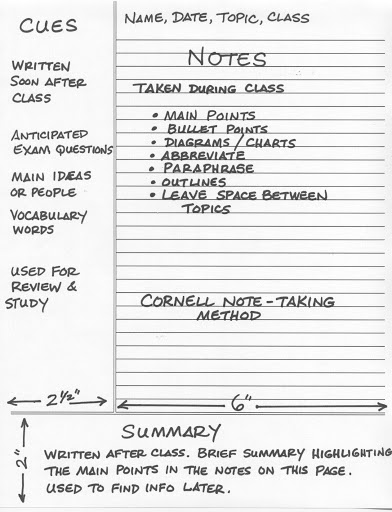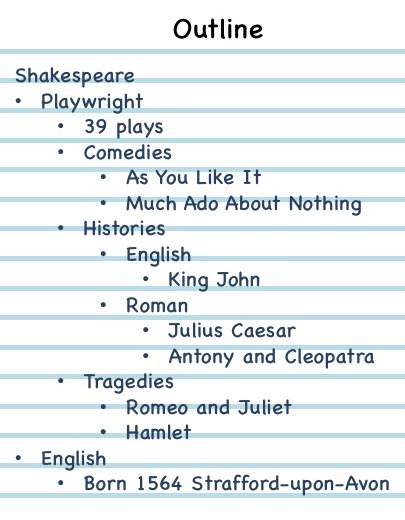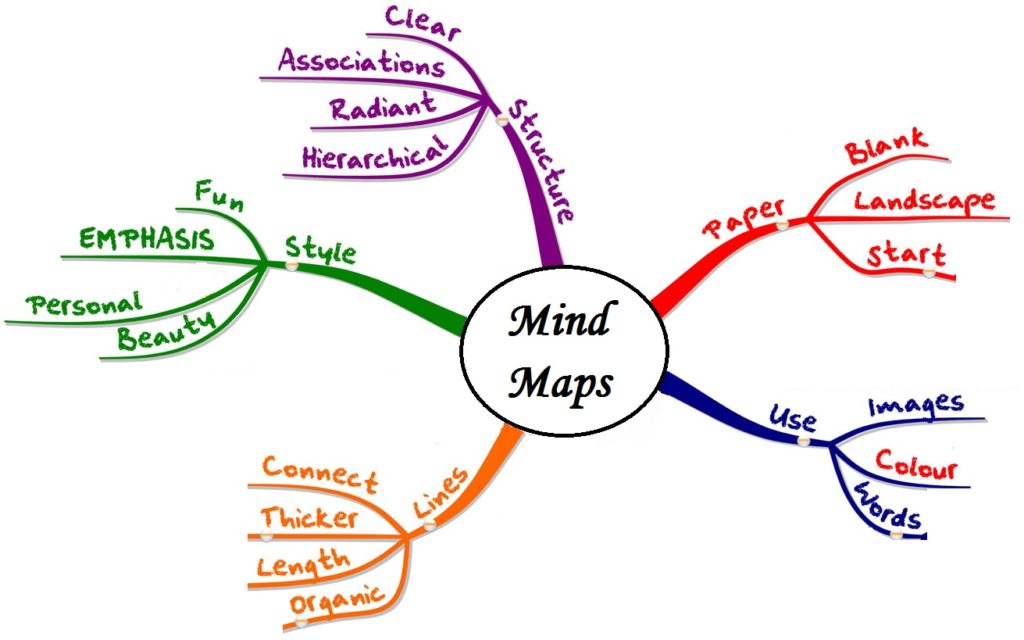Note taking is one of those skills that doesn’t get old. Whether you use it for college, work, or just as a general skill, becoming a good note taker brings many benefits to your life. While there’s not necessarily a right or wrong way of doing it, in order to enhance your kills you might have to re-think your approach to note taking.
Approach it as a learning strategy
What is the “best” way to take notes during class? The safe answer is, it depends. The nature of the lecture, the teaching style of the professor, the type of content being studied, all are factors that could determine the most effective approach to taking notes. And with so many technological advances available today, is it still necessary to take notes?
Now, the answer to that last question is simple. Yes, it is still necessary and recommended to take notes during class. Even if you can record the lecture or even if the professor provides handouts, always take notes. Why, you ask? Because taking notes is in itself an extremely valuable form of learning.
As vital as it is, the main goal behind taking notes is not just to help you create a tool to review and study content at a later time. One critical goal of taking notes is to help you process and learn the information in real-time, when you are taking your notes. And another essential goal of note taking is to develop active listening, which is an critical skill for the workplace and beyond.
Think of it as a process
Taking good notes is more manageable when you approach it as a process. This process starts before class, becomes crucial during class and continues after the class or lecture is over.
Before class
Taking good notes requires preparation. Before class you must build background knowledge by reading any assigned material or researching class content. You can’t (or shouldn’t) write down everything a presenter is saying. You must focus on key points or main ideas. That’s more difficult to accomplish when you are not familiar with the subject. Preparing before class is the first step to become and active listener and a good note taker.
Speaking about active listening, it’s extremely challenging to take good notes if you lose focus and stop paying attention. Not all topics or lectures are equally engaging. You must make an effort to find the motivation to learn the content in order to sustain your focus and avoid common physical and mental distractions (day-dreaming, getting bored, falling asleep, etc.).
During Class
Is not practical or possible for all students to sit in the front of the room, but if you are in a classroom setting, sit in a location conducive to good listening. And put away your electronic devices and any other items that could create distractions (food included). If you are using a digital device to take notes, turn off the cellular or wifi connection and/or turn off all notifications.
If your professor teaches using slides, look for headings, sub-headings or any kind of formatting that will help you identify key and important points. Pay attention to the voice-tone and body language of the lecturer to determine emphasis. Listen to the questions being asked. Write them down. Even if you miss the answers they can help you because questions discussed during class are always useful when preparing and studying for exams.
If you want to improve retention of the content being presented you need to make learning memorable. You are never going to retain one hundred percent of the content. But when you make connections, your ability to retain information increases and improves.
Like on a treasure hunt, where you are constantly searching for clues, you need to do the same in the learning environment. Look for memorable moments in the lecture: a key word, an intriguing concept, an idea you don’t understand, a catching phrase, anything that makes you wonder. And once you find that concept or idea grab it and make it personal.
After Class
Once you are finished taking your lecture notes is time to move-on to the next class. WRONG. Immediately after class, if possible, you should take a close look at your notes and start editing them. Correct errors, clarify meaning, fill in any gaps, add examples, write and answer questions; in other words, improve the quality of your notes. You will do this more efficiently when your memory and knowledge is fresh. If you wait several days (even hours) this task will become more difficult. Doing this with a classmate or a small study group could make this strategy even more effective.
Choose an appropriate template or format
Taking notes becomes easier when you use a particular format or template. As mentioned before, which template is more appropriate depends on different factors like the nature of the lecture, the teaching style of the professor, the type of content being studied, or simply your personal preference.
The following are examples of note taking formats you could follow. At the end of this post, I’ve included some great videos about note taking strategies.
Cornell Notes
The Cornell method provides a systematic format for condensing and organizing notes. Under this format the paper is divided into two columns: the note-taking column (usually on the right) is twice the size of the questions/keyword column (on the left). At the bottom of the page there’s a two inches space to write a small summary of the page’s content.

The Cornell method was conceived to implement the following steps:
- Record: During the lecture, use the note-taking column to record the lecture using telegraphic sentences.
- Questions: As soon after class as possible, formulate questions based on the notes in the right-hand column. Writing questions helps to clarify meanings, reveal relationships, establish continuity, and strengthen memory. Also, the writing of questions sets up a perfect stage for exam-studying later.
- Recite: Cover the note-taking column with a sheet of paper. Then, looking at the questions or cue-words in the question and cue column only, say aloud, in your own words, the answers to the questions, facts, or ideas indicated by the cue-words.
- Reflect: Reflect on the material by asking yourself questions, for example: “What’s the significance of these facts? What principle are they based on? How can I apply them? How do they fit in with what I already know? What’s beyond them?
- Review: Spend at least ten minutes every week reviewing all your previous notes. If you do, you’ll retain a great deal for current use, as well as, for the exam.
Outline format
Outlines are one common way to take or rewrite your notes. Using an outline is helpful because it gets you to think about how your information is organized. When you make an outline, you’re showing a hierarchy while deciding what idea is the main idea, what are the details, and which details belong together.

Mind mapping
A mind map is a way of visually outlining information by creating a diagram. By laying out ideas in space (and not just in a single straight list, as in an outline), you can show connections and relationships with greater nuance. For this reason, mind maps are especially good for showing processes and important concepts. Mind maps are also good for students who prefer to see things visually.

My note-taking lecture
Here’s a previously recorded lecture on note-taking strategies:
The following link provides an accessible script of the content from this video:
More videos on note-taking
College Info Geek, Thomas Frank, uses Street Fighter characters to explain how to take notes in class using “the best” five methods:
From the YouTube channel SciShow Psych, this video explains how to take “the best notes” according to Psychology (with a great discussion on paper-based vs. digital notes):
And here’s another great video on note-taking; this one from the YouTube channel Med School Insiders: